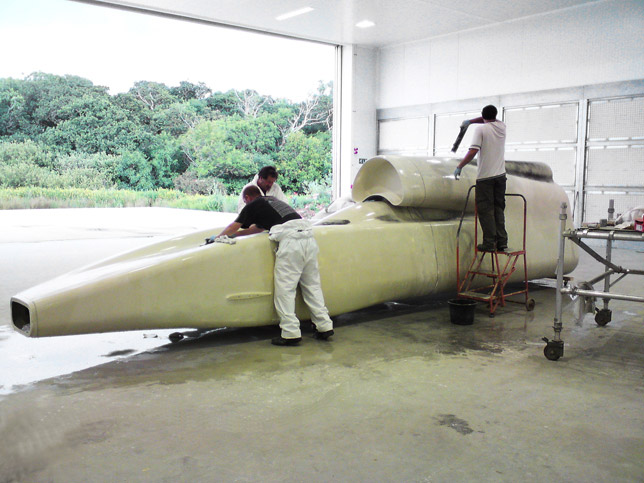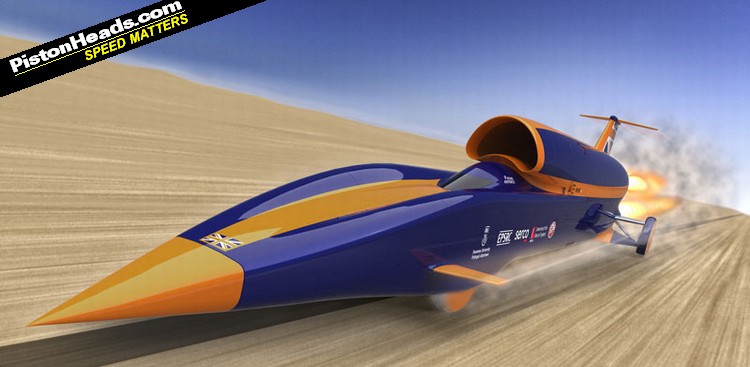Still from a computer simulation of Bloodhound SSC modelling how the chassis will flex under the stresses produced by the rocket and parachute
Three months ago, a team of engineers unveiled their plans to build Bloodhound SSC, the first car designed to reach 1,000mph. Since the fanfare of the project's launch, engineers have been doing what engineers do best: getting on with it.
I've picked up a bit about the latest computer simulations the team has been running, and wanted to write a quick note on them for anyone who's keen to follow the project more closely.
Arup, the consulting engineers who happened to work on London's wobbly Millennium Bridge, are lending their expertise to the project, and that's not as worrying as I've made it sound. Those guys really know their stuff.
So what have they been doing? One of the first tasks for Arup was to create a computer model of the Bloodhound's chassis and structure. With this, the team can test whether the concept design will rip to pieces under the stresses of the jet engine, the booster rocket, or the parachute, which is used as a brake.
If the chassis can't take the strain, it's back to the drawing board in a major way.
So far, it sounds as though the tests are going well, though it's early days. This kind of modelling also lets engineers spot parts of the car that are "over-designed". If a strut here or there is stronger than it needs to be, for example, it can be replaced with something more slender to save weight.
The still, above, is from one of the team's computers and is part of a series that shows how the chassis flexes under the stresses produced by the rocket and parachute.
I'll post more as and when I hear. It's an ambitious, inspiring project and it will be great to see this machine in action.
Subscribe to:
Post Comments (Atom)





0 comments:
Post a Comment